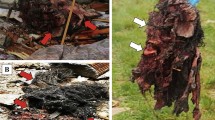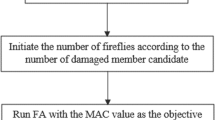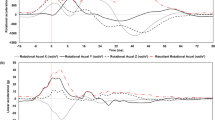Abstract
The demand for blastworthy structures increases due to a large number of casualties in the armored vehicle undergoing improvised explosive device (IED) and landmine attacks. In this research, the numerical studies on the countermeasure analysis to reduce injury biomechanics risk were conducted. The available experiment data of occupant survivability test on a medium size tank was used to validate the numerical model. The subsystem evaluation in this study included the finite element modeling of military personnel, seat system, surrounding interior system, seatbelt, and restraint system with four running conditions. The military personnel inside the armored vehicle was modeled by using Hybrid III 50th percentile anthropomorphic test device (ATD) and its biomechanical response was monitored on the head, neck, thorax, spine, femur, and tibia. The load case for this study referred to NATO STANAG 4569 level 3b with 8 kg TNT explosive load underbelly. The injury assessment reference values (IARV) for the regulation used in this study were based on AEP-55 volume 2. Based on this study, the critical injuries identified on the head injury, neck compression, and tibia axial load. The solid frame as part of seat structure appeared to contribute to an excessive kinematic on the lower extremities. The vehicle acceleration resulted from the load blast was directly transmitted to the lower extremities, resulting in unintended kinematic and interaction on the passenger body. The proposed solutions were to introduce a flexible mounting for the seat system and as well increasing the height of the footrest to avoid direct transmission of vehicle acceleration. The modified countermeasure design reduced significantly head, neck, and tibia injury criteria more than 90 % from the baseline design (existing design). The new anti-mine seat design successfully passed all the standard regulation thresholds of injury criteria.
Similar content being viewed by others
Abbreviations
- A :
-
Yield strength in Johnson-Cook material
- B, n, C :
-
Johnson-Cook hardening parameters
- C p :
-
Specific heat coefficient
- E :
-
Young’s modulus
- F max :
-
Maximum tensile force
- G :
-
Shear modulus
- m :
-
Johnson-Cook thermal softening parameter
- T :
-
Working temperature
- T m :
-
Melting temperature
- T r :
-
Room temperature
- α :
-
Thermal expansion coefficient
- έ:
-
Working strain rate
- έ0 :
-
Strain rate reference
- έD :
-
Densification strain
- έf :
-
Failure strain
- έpl :
-
True plastic strain
- π:
-
Density
- σpl :
-
True plastic stress
- U :
-
Poisson’s ratio
- X :
-
Taylor-Quinney coefficient
References
E. Krzystala, A. Mężyk and S. Kciuk, Minimisation of the explosion shock wave load onto the occupants inside the vehicle during trinitrotoluene charge blast, Intl J. of Injury Control and Safety Promotion, 23 (2) (2016) 170–178.
C. Wilson, Improvised explosive devices (IEDs) in Iraq and Afghanistan: Effects and countermeasures, Congressional Research Service Report for Congress (2007).
RTO-TR-HFM-090, Test Methodology for Protection of Vehicle Occupants against Anti-vehicular Landmine Effects, NATO RTO (2007).
NATO STANAG 4569, Protection Levels for Occupants of Armoured Vehicles, NATO RTO (2012).
H. Roman, R. M. Harris and D. B. Cameron, Blast injury research: Modeling injury effects of landmines, bullets, and bombs, Clinical Orthopedics and Related Research, 422 (2004) 97–108.
D. B. Cameron, M. Davis, K. Rafaels, M. S. Rountree, R. M. Harris, S. Ellory, A. Walter, D. Gina and Z. Michael, A methodology for assessing blast protection in explosive ordnance disposal bomb suits, Intl. J. of Occupational Safety and Ergonomics, 11 (4) (2005) 347–361.
R. Panowicz, K. Sybilski and D. Kolodziejczyk, Numerical analysis of effects of IED side explosion on crew of light armoured wheeled vehicle, J. of KONES Powertrain and Transport, 18 (4) (2011) 331–339.
A. Ramasamy, A. M. Hill, A. E. Hepper, A. M. Bull and J. C. Clasper, Blast mines: Physics, injury mechanisms and vehicle protection, J. of the Royal Army Medical Corps, 155 (4) (2015) 258–264.
C. Y. Park, Numerical study on determining design parameters of wheeled armored vehicles, J. of Mechanical Science and Technology, 31 (12) (2017) 5785–5799.
NATO-AEP-55 Volume 2, Procedures for Evaluating the Protection Level of Armoured Vehicles, NATO Report (2011).
A. N. Pratomo, S. P. Santosa, L. Gunawan and I. S. Putra, Design optimization for blastworthy aluminum foam sandwich structure using design for six sigma (DFSS) methodology, Master Thesis, Institut Teknologi Bandung (2017).
S. Guha, D. Bhalsod and J. Krebs, LSTC Hybrid III 50th Fast Dummy: Positioning & Post-processing, Dummy Version: LSTC.H3_50TH_FAST.111130_V2.0, LSTC, Michigan (2011).
A. N. Pratomo, S. P. Santosa, L. Gunawan and I. S. Putra, Numerical study and experimental validation of blastworthy structure using aluminum foam sandwich subjected to fragmented 8 kg TNT blast loading, Intl. J. of Impact Engineering (under review).
T. Børvik et al., A discrete particle approach to simulate the combined effect of blast and sand impact loading of steel plates, J. of the Mech. and Phy. of Solids, 59 (2011) 940–958.
LSTC Learning Aid Vehicle and 50th Belted Driver 100112 V1.0, LSTC Michigan (2018).
W. Witkiewicz and A. Zielinski, Properties of the polyurethane (PU) light foams, Adv. in Mat. Sci., 6 (2) (2006) 35–51.
LSTC, LS-DYNA Keyword User’s Manual Volume II: Material Models, Version 971, Michigan (1999).
J. O. Hallquist, LS-DYNA Theory Manual, LSTC, Michigan (2006).
G. R. Johnson and W. H. Cook, A constitutive model and data for metals subjected to large strains, high strain rates and high temperatures, Proc. of the 7th Intl. Symposium on Ballistics, The Hague, The Netherlands (1983).
PT PINDAD Indonesia, Occupant survivability test data of mine blast test for medium size tank, Internal Report (2018).
Acknowledgments
This collaborative research is jointly conducted by Institut Teknologi Bandung (ITB) and PT PINDAD. The authors would like to thank LPDP RISPRO Program for funding support under grant number PRJ-634/LPDP/2016, and PT PINDAD for its continuous support. We would like to thank the Indonesian Ministry of Research, Technology and Higher Education for providing partial funding under WCU Program managed by ITB, and for providing scholarship and research assistantship under Master-Doctor Scholarship Program (PMDSU). Thanks are due to LSTC for the courtesy of the academic license of LSDYNA to Lightweight Structure Research Group ITB.
Author information
Authors and Affiliations
Corresponding author
Additional information
Sigit Puji Santosa is a faculty member in the School of Mechanical and Aerospace Engineering, Institut Teknologi Bandung, Indonesia. He received his doctoral degree in Mechanical Engineering from MIT, and currently the Director for National Center for Sustainable Transportation Technology (NCSTT), Indonesia.
Rights and permissions
About this article
Cite this article
Pratomo, A.N., Santosa, S.P., Gunawan, L. et al. Countermeasures design and analysis for occupant survivability of an armored vehicle subjected to blast load. J Mech Sci Technol 34, 1893–1899 (2020). https://doi.org/10.1007/s12206-020-0411-1
Received:
Revised:
Accepted:
Published:
Issue Date:
DOI: https://doi.org/10.1007/s12206-020-0411-1




